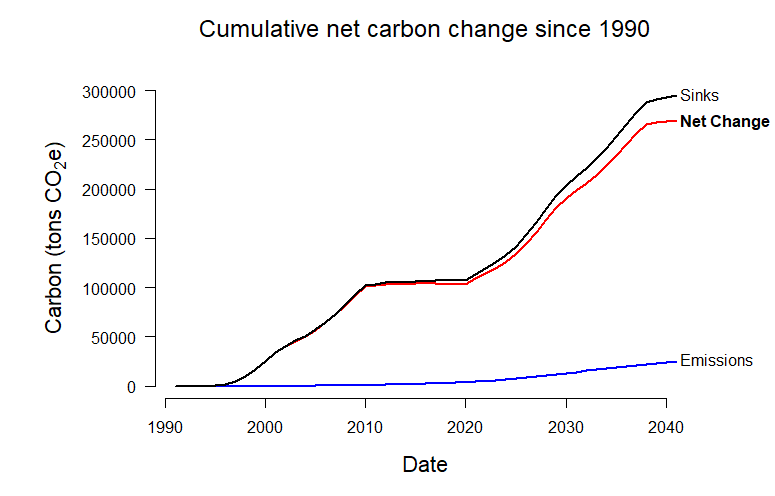Our emissions profile
Lowlands Wines owns and manages significant areas of conservation and production forests.
Not only do these forests completely offset all emissions associated with wine production (vineyard, winery, packaging and distribution to customer), they do so by an order of magnitude (Figure 1).
Figure 1: Cumulative total emissions, sinks, and net carbon change associated with Lowlands Wines activities since 1990, and forecast changes out to 2040. Annual sinks are >10 times greater than the annual emissions. For a summary of the methods used the produce this figure click here.

This investment in forestry started in 1992 with the planting of 368 ha of P. radiata production forestry. These forests are incredible carbon sinks that, even when harvested and replanted, store on average 290 tons of CO2e per ha more than pastoral farmland. They also provide employment and a sustainable renewable resource in the form of wood.
Additional forests were planted in 2020 (87.8ha) and 2021 (254ha), bringing the total area of new production forests to 710.4 ha.
Lowlands Wines also owns and manages 2000 ha of native regenerating native forest. This includes 785 ha that has established post-1990 following cessation of farming activities, as well as 1200 ha of older regenerating forest. These native forests are a permanent long term carbon sink. They also provide a multitude of additional ecosystem services including habitat for biodiversity and provision of fresh water.
The amount of carbon sequestered every year from these activities is more than 10 times the carbon emitted from all stages of our wine production.
